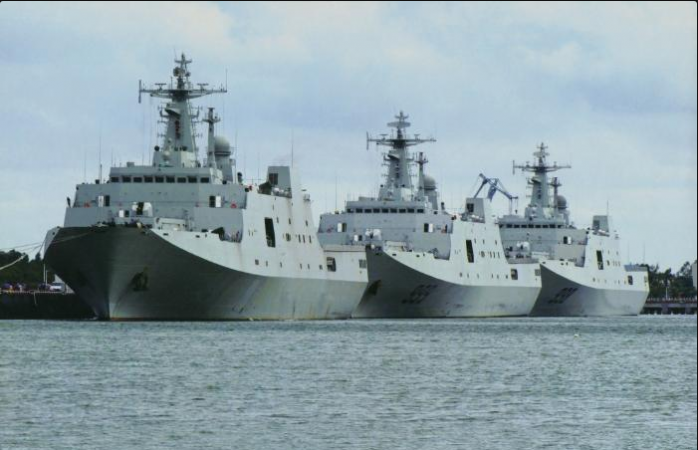
BEIJING: In light of strategic competition with China, which a recent report referred to as "both a current and long-term challenge", the United States intends to increase its naval fleet to more than 500 ships by 2045.
According to the US Navy, the expansion was necessary to preserve US maritime dominance as part of the country's "integrated deterrence" strategy.
However, Chinese military experts believe there are significant financial limitations to the US plans. He said the Chinese Navy still lags behind in fleet tonnage and technology and the US Navy's financial woes should not be used as an excuse to expand.
According to a Tuesday report by USNI News, the most recent US naval strategy calls for a fleet of 373 manned ships by 2045, supported by about 150 unmanned surface and underwater vehicles.
According to Admiral Mike Gilday, Chief of Naval Operations, China's military is "endangering US naval forces" because of its rapid military modernization and expansion.
China is developing cross-domain military capability to compete with the US. According to Gilday, its belligerent behavior is threatening US interests, undermining partnerships and alliances, and undermining the rules-based system.
China builds its military with one goal in mind: to turn the security landscape in its favor by blocking US military access to the western Pacific and beyond.
This decade is important. According to the report, the US should maintain maritime dominance as international rivals pose a threat to US interests.
It comes as tensions in the Taiwan Strait and South China Sea are rising, especially in light of a possible visit by US House Speaker Nancy Pelosi to Taiwan. Sino-US relations are also deteriorating.
After the guided missile destroyer USS Benfold passed through the Taiwan Strait last week, the Chinese military criticized Washington for its constant "provocation".
With the largest number of warships in the world, the Chinese People's Liberation Army (PLA) is set to achieve its objective of establishing a blue water navy with at least six aircraft carrier battle groups by 2035 with the launch of a third aircraft carrier last month. Getting closer.
According to a US Defense Department report published in November, China has the world's largest maritime power, with an inventory of about 355 ships, which is projected to grow to 420 in about four years and to 460 by the year 2030.
Our total may exceed their number, but the tonnage is less. According to retired naval analyst Li Jie, who now lives in Beijing, the US has a large fleet of aircraft carriers and amphibious ships.
Li claimed that the US had increased the number of Chinese ships to promote the idea that China was a threat to the world and its own citizens.
According to Gilday's report, the US Navy has 12 Columbia-class ballistic missile nuclear submarines, 12 aircraft carriers, 96 large and 56 small surface ships, 31 large-deck amphibious warships, 18 light amphibious warships, approximately 150 unmanned surface and water warships.
Additionally, it wants about 900 anti-ship and anti-submarine aircraft as well as 1,300 carrier-based aircraft.
Li noted that the US Navy has "nothing [with] to persuade Congress and that it has to use China [the threat doctrine] as an excuse" to retire soon. Due to the high maintenance cost of carriers and other large warships.
Chinese analysts pointed out that most of the fleet is made up of smaller classes of ships, arguing that the US Navy should not use the expansion of China's maritime forces as a justification for requesting more funding.
According to Zhou Chenming, a researcher at the Yuan Wang military science and technology think tank in Beijing, the US is under pressure from China's military modernization. However, Zhou said China's recent plans are unlikely to be implemented due to lack of funding.
According to Zhou, they have difficulty achieving [this goal] because they have wasted too much money in the past.
America's emphasis on unmanned ships has been brought to light by Shanghai-based military analyst Nie Lexiong, who claims it is in line with the advancement of future military technologies that emphasize "unmanned, stealth and intelligent" warfare. .
Ni also pointed out that China lags behind the US in major naval force technologies, and US sanctions on Chinese military technology continue to hinder China's efforts to modernize its military.
China announces fresh military drills around Taiwan
Chinas digital economy hits 71 trln USD
China collects 220000 new agricultural germplasm resources